Can I Add Bugs To My Garden
I never thought much about the insects in my garden until I had pepper plants with these little bugs that would move around every time I saw them. I later learned that they were sharpshooters. And sharpshooters suck the life out of your plants by getting in the root system and taking the water from the plant. Not fun!
Thankfully I was able to get rid of them but I did learn that it is important to know about harmful bugs as well as good bugs. Today we are going to focus on the good bugs. Here's a list of insects that you want in your garden and how to get them there without having to purchase them.

1. Ladybugs
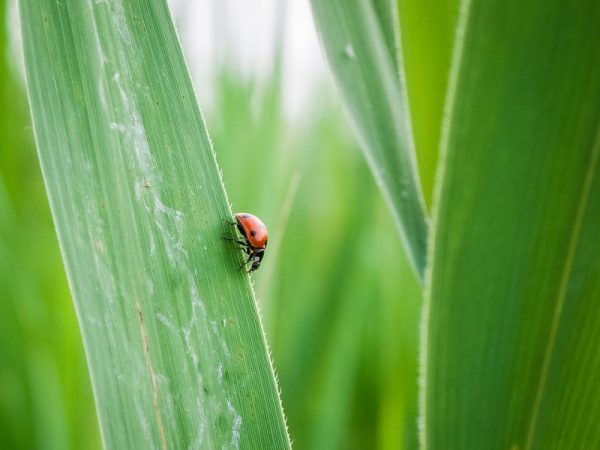
Why They are Beneficial:
Ladybugs are probably the most well-known of all the beneficial bugs in the garden. Part of the reason they are beneficial is that they eat quite a few of the bad bugs. Each ladybug can eat fifty to sixty aphids per day and over five thousand in a lifetime. In addition, they also like to munch on mealy worms, leafhoppers, and mites.
Their larvae don't harm your plants while being born and will eventually eat more bugs too. If you have enough of the items that attract them and enough food, you can have many generations in one season.
You don't have to worry about them being eaten by predators because they secrete an odor that most other bugs do not like.
Another reason they are so well liked in the garden is because of their beauty. You see mostly ladybugs that are red but they come in other colors, such as orange and yellow as well
How to Attract Them:
You can attract ladybugs by planting dill and fennel. These two plants also attract a butterfly that is very rare, so be sure to add them to your garden. Double benefits.
2. Spined Soldier Bugs
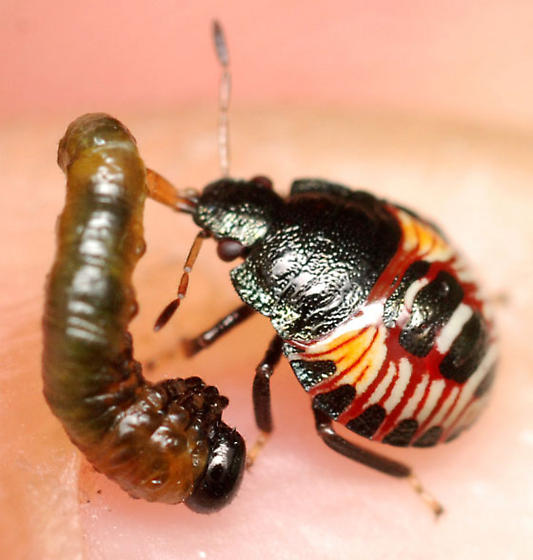
Why They are Beneficial:
This is a type of stink bug, but do not fret, they are beneficial to your garden. These bugs are predators of caterpillars and beetle larvae. How can you tell them apart from the bad stink bugs though? You can because their shoulders and their legs have spines while the other stink bugs do not have this distinction.
The bug might suck on your plant to get water but it does no harm and does not transmit diseases. Still, it is important to keep your plants watered well when you have the spined soldier bug.
If you are struggling with Colorado Potato Beetle or Mexican Bean Beetle, these guys are your go-to for fixing the problem without having to use chemicals. They are also good for soybeans.
How to Attract Them:
If you place perennial flowers around your garden bed, these bugs will have adequate shelter to live on. Besides, flowers add extra beauty to the garden. I just love double benefits, can you tell?
3. Tachinid Fly
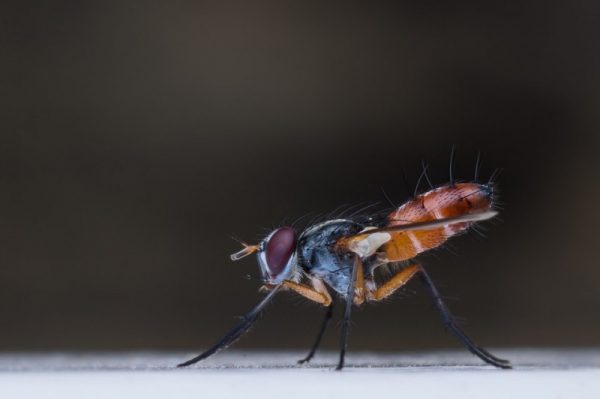
Why They are Beneficial:
One of the things that I think is really neat about these flies is that they insert their larvae into a "bad bug" and when the larvae hatch they eat the bug from the inside out. If the tachinid fly decides to lay their larvae somewhere else and a bug comes up and eats the larvae, their lunch will eventually kill them and the larvae will still live.
There are many more of these bugs than have even been named but the bad bugs they kill all have names that make any gardener cringe- including gypsy moths, cabbage loopers, Japanese beetles, armyworms, cutworms, sawflies, codling moths, peach twig borers, pink bollworms, tent caterpillars, squash bugs, and many more.
What is even more interesting is that part of the reason they do not have a name is that they are so small that we often miss them in the garden. They can be up to the size of a house fly but are typically less than half an inch in length.
In addition to killing bad bugs, these flies will also help the bees pollinate your garden. You get double the benefit and rarely ever see these flies. This makes it good for everyone involved… well, except for the bad bugs.
How to Attract Them:
To attract them you should plant dill, parsley, clover, and herbs. Yeah for herbs!
4. Braconid Wasps
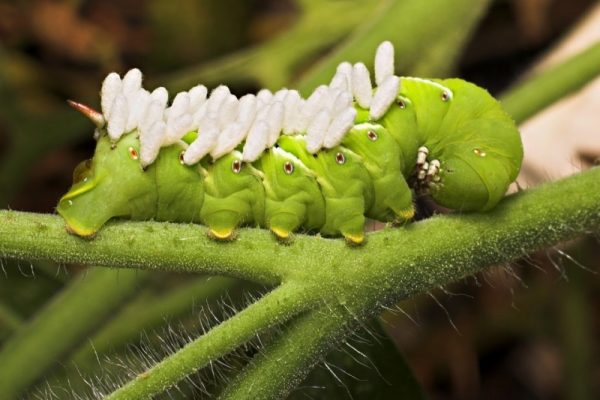
Why They are Beneficial:
Like the fly, these wasps attach their larvae to the tomato hornworm, as shown above. The larvae start out eating the hornworm alive and by the time the wasps are fully grown, the hornworm is dead.
Considering the fact that the female will lay anywhere from fifty to four hundred eggs at one time, their impact is felt throughout the garden. Before you know it you will have beautiful tomatoes without a single hole from a tomato hornworm eating your precious produce before you can pick it.
This means if you see a hornworm in the state the one above is in leave it alone, it is soon going to die anyway.
In addition, the adults will eat aphids, codling moths, garden webworms and many different caterpillars, beetles, and flies.
Worried about the fact that these bugs are wasps? They don't sting unless they have to and even then their stings are considered medically harmless.
How to Attract Them:
Nectar plants with small flowers are the best way to attract them. This includes dill, parsley, and wild carrots.
5. Ground Beetle
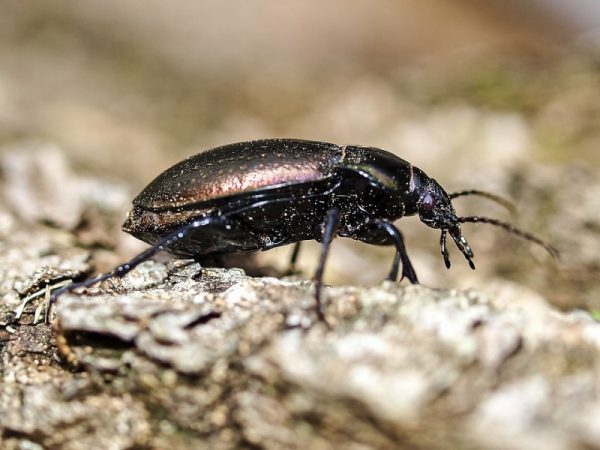
Why They are Beneficial:
Diversity is something that, in some respects, we seemed to have lost over time in the garden. The ground beetle seems to have not noticed this as there are over twenty-five hundred different species.
The ground beetles are nocturnal and get all the bugs that are on the ground (go figure).
Some of the bad bugs they will help you get rid of includes slugs, snails, cutworms, cabbage maggots, and caterpillars. And boy can they eat! One beetle larvae can kill up to fifty caterpillars.
How to Attract Them:
You are in luck if you plant perennials or have a compost pile.
The reason that they prefer produce or flowers that grow year after year is because they put their larvae in the ground during the late summer months and the babies hunt for food in the ground at first and then come out in the springtime which means the bugs are using your soil all year long and pay their rent in keeping your food safe.
They are beneficial to your garden soil as well because they help to eat the compost and create the living environment that is needed to help compost deteriorate.
6. Minute Pirate Bug
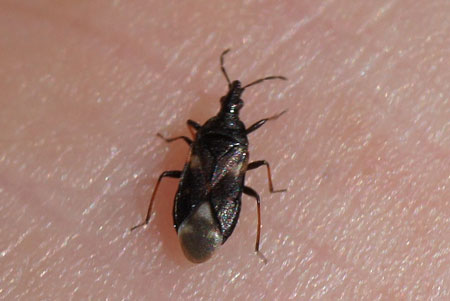
Why They are Beneficial:
I don't know if it's a meal or if they are just territorial but the minute pirate bug is not picky about which bug it eats. This one I would add if you seem to have only bad bugs in your garden. They especially like aphids, spider mites, and thrips. The adults can consume up to twenty thrips per day and, therefore, are used in greenhouses quite a bit to combat that issue.
It is important to note though that if you have already added or have good bugs, I might skip out because the Minute Pirate Bug might be too worried about the good bugs to get rid of the bad bugs.
How to Attract Them:
Some of the ways to attract Minute Pirate Bugs are to grow alfalfa and daisies. Another way to attract them is to have a leaf pile which will also bring several of the other bugs.
7. Predatory Mites
These little critters are handy to keep around your home if you find yourself battling with spider mites. Unless you live in a humid climate, they probably won't naturally draw to your garden.
Instead, they prefer extreme humidity from structures like a greenhouse and high tunnels. If spider mites have made their way into your greenhouse, you'll want predatory mites around to help.
8. Mealybug Destroyer
As the name suggests, mealybug destroyers go after pesky mealybugs. Mealybugs look like little clusters of fluff stuck to plants.
However, they feed on the sap of your plants and can harm them. If you plant fennel, dill, sunflowers, or goldenrod you could draw mealybug destroyers and kick mealybugs out of your garden for good.
9. Green Lacewings
These bugs are beautiful. Their wings genuinely look as though they have a lace design on them. As gorgeous as their wings are, they serve a mighty purpose for your garden. Lacewings will eat:
- Aphids
- Whiteflies
- Leafhoppers
- Mealybugs
Also, they are simple to draw to your gardening space too. You should plant dill, angelica, or coriander to catch their attention.
10. Aphid Midges
As the name suggests, aphid midges prey on one pesky insect which finds its way into most gardens—aphids.
But if you are already trying to attract some of the bugs mentioned above with dill, you'll be glad to know you've already begun attracting aphid midges too.
11. Damsel Bugs
These bugs are another handy creature to have hanging around your garden. They are great at ridding your garden of multiple insects such as:
- Caterpillars
- Mites
- Aphids
- Cabbage Worms
You can easily attract them to your gardening space by planting caraway, spearmint, and fennel.
12. Hoverflies
While we are on the topic of flies, another good variety to have hanging around your garden are hoverflies. They will prey on
- Aphids
- Scale insects
- Caterpillars
This variety of fly is only drawn to a few items, though. You'll need to grow common yarrow, fern-leaf yarrow, dill, or basket of gold to attract this type of fly to your garden.
13. Soldier Beetles
Soldier beetles are another helpful variety of beetle you want in your garden. They eat grasshopper eggs, aphids, and soft-shelled insects.
They are also easy to attract to your garden by planting goldenrod, zinnias, marigolds, or linden trees. If you have these plants in your garden, the soldier beetles will come.
14. Fungus Gnat Predator
These pests are helpful in combatting multiple different insects and their larvae. They will stand against:
- Spider mites
- Fungus Gnats
- Gnat larvae
However, you will most likely have to purchase these mites from a reputable distributor. They recommend you be careful using pesticides before introducing them into your garden. From there, the mites should handle the fungus gnats until the population is minimized and eventually destroyed.
15. Praying Mantis
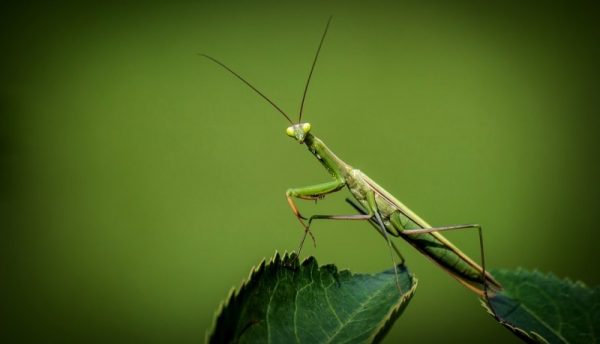
Why They are Beneficial:
The praying mantis may not be a bug in the manner that we talked about before since they are a bit bigger but they also like to eat many of the bad bugs we have mentioned, including caterpillars, moths, beetles, and crickets. They, like the ladybug, are very beautiful.
How to Attract Them:
You can attract the praying mantis by having tall grass. If you don't care to have tall grass, try growing shrubs, dill, and marigolds.
16. Spiders
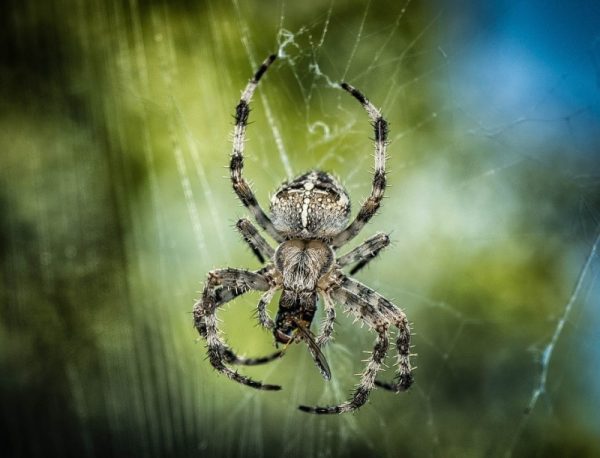
Why They are Beneficial:
I was unaware that spiders eat bed bugs. Not something I have ever had to worry about but, nonetheless, is very interesting. For the garden, they also eat aphids, caterpillars, grasshoppers and fruit flies.
How to Attract Them:
In order to get spiders to your garden, you need a place for them to spin their webs. This means that larger plants, such as corn, will do really well at attracting these bugs.
17. Bees

Why They Are Beneficial:
This is an animal that I want in my garden. I have one blueberry bush right now and it grows two blueberries a year right now. Next summer I plan to purchase a few more bushes and the bees will help them pollinate. Bees also help pollinate other plants such as tomatoes, raspberries, cranberries, peppers, squash, along with pollinating flowers.
How to Attract Them:
One of the best ways to attract bees is simply to have the items mentioned above. You could also purchase a beehive which would help you be able to collect local honey as well.
Other Beneficial Non-Insect Animals for Your Garden
18. Toads
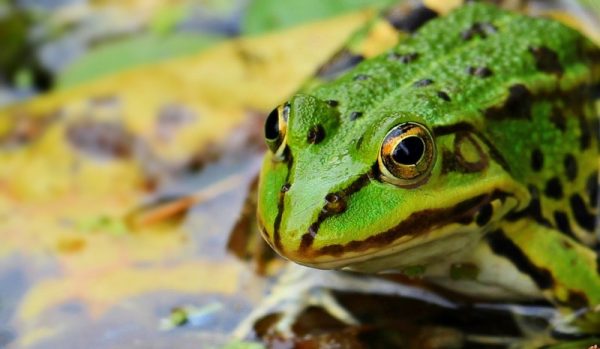
Why They are Beneficial:
I had toads on my front porch a whole bunch back in 2008. I never understood why they were so attracted to my area and now I understand why- they like slugs and bugs and can eat up to ten thousand bugs during the summer months.
Plus, I think these little guys are awfully cute.
How to Attract Them:
Building toad houses will attract these beneficial amphibians. So having a place with shelter and moist shade. If you are curious about how to make a toad house, here's a great DIY instruction manual.
19. Garter Snakes
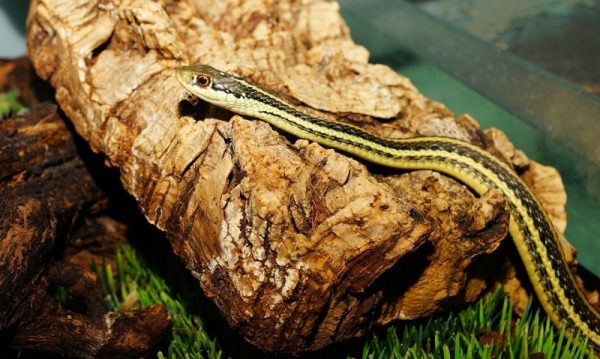
Why They are Beneficial:
Garter Snakes also eat bad bugs from the garden and control crickets, grasshoppers, and other insects. Not having legs means that the garden snake is able to get into areas that are different from the other bugs or animals we have mentioned before now.
I also want to note that if you struggle with mice, a garden snake is another one to leave alone as well. They will eat your mice that are causing problems.
How to Attract Them:
Attract them by having some tall grass, bushes, or piles of woods or rocks. Thankfully, if you have a fireplace that uses wood, you should already have a woodpile.
20. Earthworms
Earthworms are a great addition to your garden. They will aerate your soil, their waste will make your soil richer, and they are excellent at breaking down everything you spread on your garden.
However, you should be careful of applying synthetic fertilizers to your garden when introducing earthworms to your garden because they will find a new home when the soil around them changes. In the case of adding synthetic fertilizers, it makes the soil salty and less desirable for the worms.
21. Baby Chicks
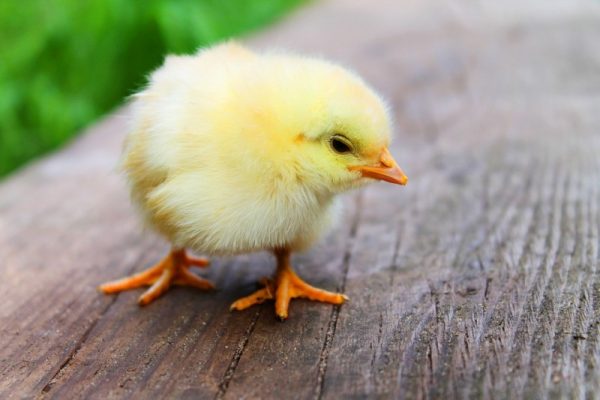
Why They are Beneficial:
I learned about this one from a fellow gardener friend who is also a teacher. She told me that they let the chicks in their garden for most of their young lives. The chicks will eat the bugs and not the plant because they don't know what they are missing when they don't touch the plants.
When they get a little older they start to realize that the fruits and vegetables are good too and start eating the plants. Obviously, at this point, they take the chicks and put them in a pen or let them roam free, depending on the time of day.
How to Attract Them:
Chicks are not something you can attract but if you do it just right you can purchase one set of female chicks along with one or two roosters and have enough chickens to produce more and your chicken population will grow over time.
22. Beneficial Nematodes
This option for a beneficial insect isn't an insect at all, but it's helpful and worth the share. Beneficial nematodes are a parasite which goes to town on protecting your garden. They eat over 200+ insects who start their lives in your garden soil.
Some of the insects include:
- Weevils
- Japanese beetles
- Fleas
- Fungus Gnats
It is best to purchase beneficial nematodes to introduce them to your garden. From there, you may have to reintroduce more beneficial nematodes each year as they frequently die off during the harshness of winter.
Having bugs in your garden might gross you out at first but when you come to realize that they are benefitting from your hospitality just as you are benefitting from them being there, then you realize this is a symbiotic relationship and all is well.
Your garden survives without harsh chemicals, making the food you eat better for you and for the world around you.
Thanks to things that are small, we become mighty!

Was this article helpful?
Yes No
Can I Add Bugs To My Garden
Source: https://morningchores.com/beneficial-garden-insects/
Posted by: hollingsworthageres.blogspot.com

0 Response to "Can I Add Bugs To My Garden"
Post a Comment